Submitted by WA Contents
Dorte Mandrup, DS+R and WEISS/MANFREDI release masterplans to reimagine La Brea Tar Pits
United States Architecture News - Aug 28, 2019 - 05:49 12000 views
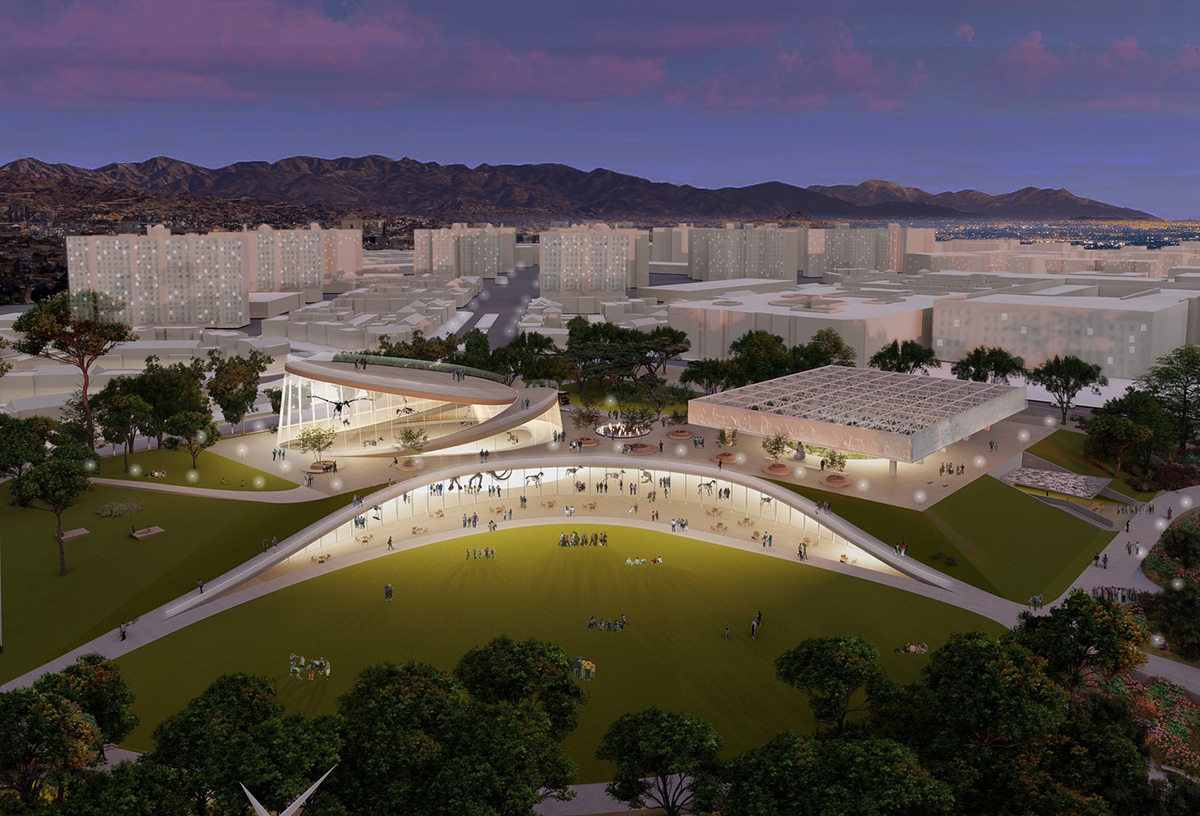
The Natural History Museums of Los Angeles County (NHMLAC) have revealed three masterplan visions for to reimagine and renovate one of the institution’s most prized components: its 12-acre campus in Hancock Park, encompassing the world-renowned La Brea Tar Pits and the George C. Page Museum.
Three proposals were envisioned by Copenhagen-based firm Dorte Mandrup and New York-based studio Diller Scofidio + Renfro (DS+R) and New York-based studio WEISS/MANFREDI for a comprehensive reimagining of this uniquely important campus.
Three teams began with the development of a creative master plan, undertaken to advance NHMLAC’s scientific research and public engagement for the next half-century.
On the basis of its own review and the public’s feedback, NHMLAC expects to announce winning firm toward the end of 2019. The firm will then lead a multi-disciplinary creative team through a public engagement, master planning, design and construction process over the next several years.
Dr. Lori Bettison-Varga, President and Director of the NHMLAC, announced the inauguration of master planning at an "ideas incubator" at La Brea Tar Pits and the nearby El Rey Theatre, where NHMLAC convened more than seventy leading figures from the fields of science, the arts, design, entertainment, education, technology, communications, philanthropy, and government for a day of open-ended discussion that will inform and kick-start the design process.
"La Brea Tar Pits and the Page Museum are the only facilities of their kind in the world—an active, internationally renowned site of paleontological research in the heart of a great city, and a museum that both supports the scientists’ work and helps interpret it for more than 400,000 visitors a year," said Dr. Bettison-Varga.
"We are excited to seize this once-in-a-lifetime opportunity to not just renovate these facilities thoroughly but also to think deeply about how to make them function as well for neighbors and guests over the next 40 years as they have for the last 40—perhaps, even better."
"It’s an adventure that starts now, with the blue-sky thinking of our Ideas Incubator, and will continue with the work of three of the best architecture and design teams in the world—and the input of Angelenos as well. We look forward eagerly to seeing the concept proposals and hearing from our community," Dr. Bettison-Varga added.
The Natural History Museums of Los Angeles County are a public / private partnership with the County of Los Angeles, which owns the 23 acres of Hancock Park, including the 12-acre parcel managed by NHMLAC.
"La Brea Tar Pits and the Page Museum are enormously popular and valuable cultural assets for the County, attracting neighbors, school children from across the metropolitan area, and visitors from around the world. The Tar Pits are known everywhere as a visual symbol of the cultural and long natural history of Los Angeles," said Los Angeles County Supervisor Sheila Kuehl.
"The Board of Supervisors is proud to support this forward-thinking effort by the Natural History Museums to create a vibrant and engaging future for this exciting and important public resource."
To reimagine La Brea Tar Pits, NHMLAC directed the architects to assemble teams that include not only architects and landscape architects, but scientists, engineers, designers and artists. The three finalists were selected based on the overall quality and character of their response to a Request for Information, their design approach, their previous experience and team strength, references and project approach.
See the three finalists' proposals below:
Diller Scofidio + Renfro (DS+R)
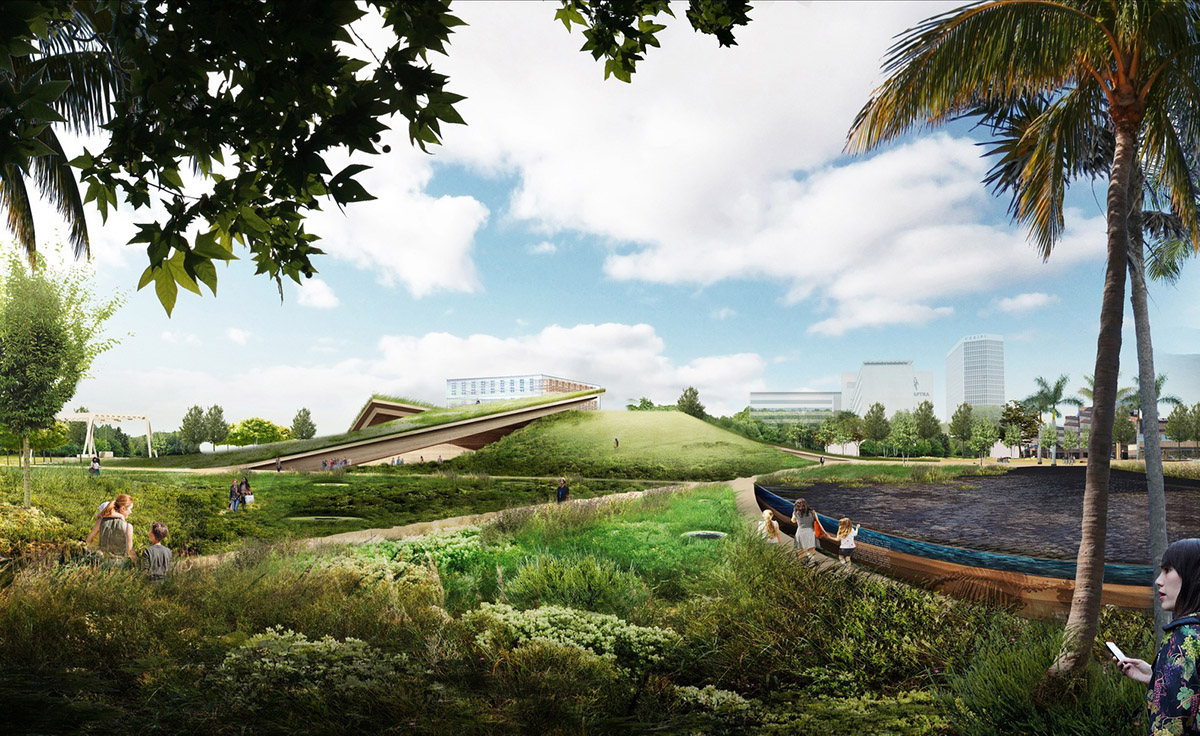
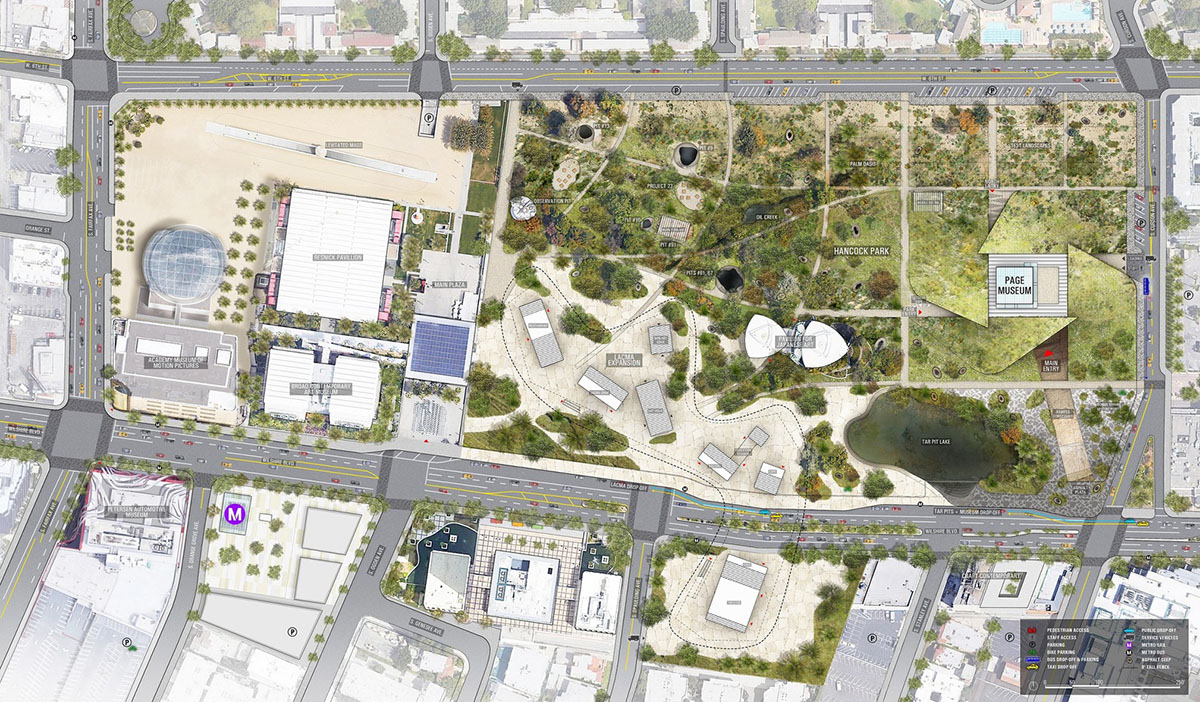
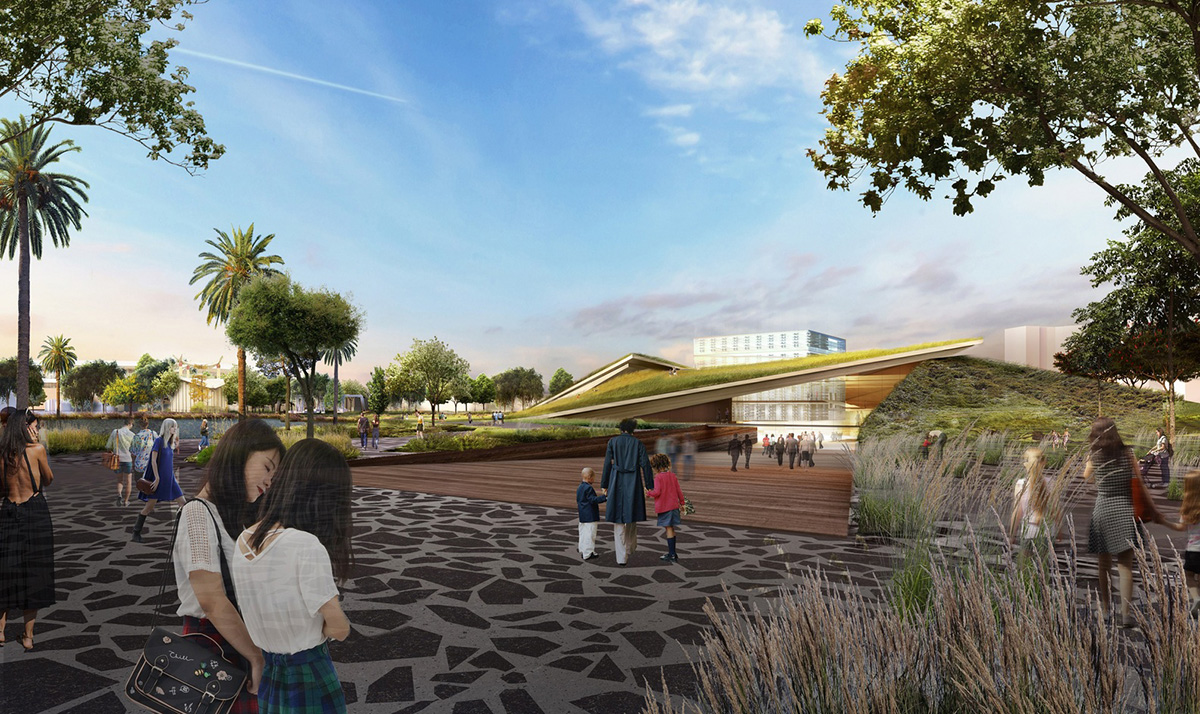

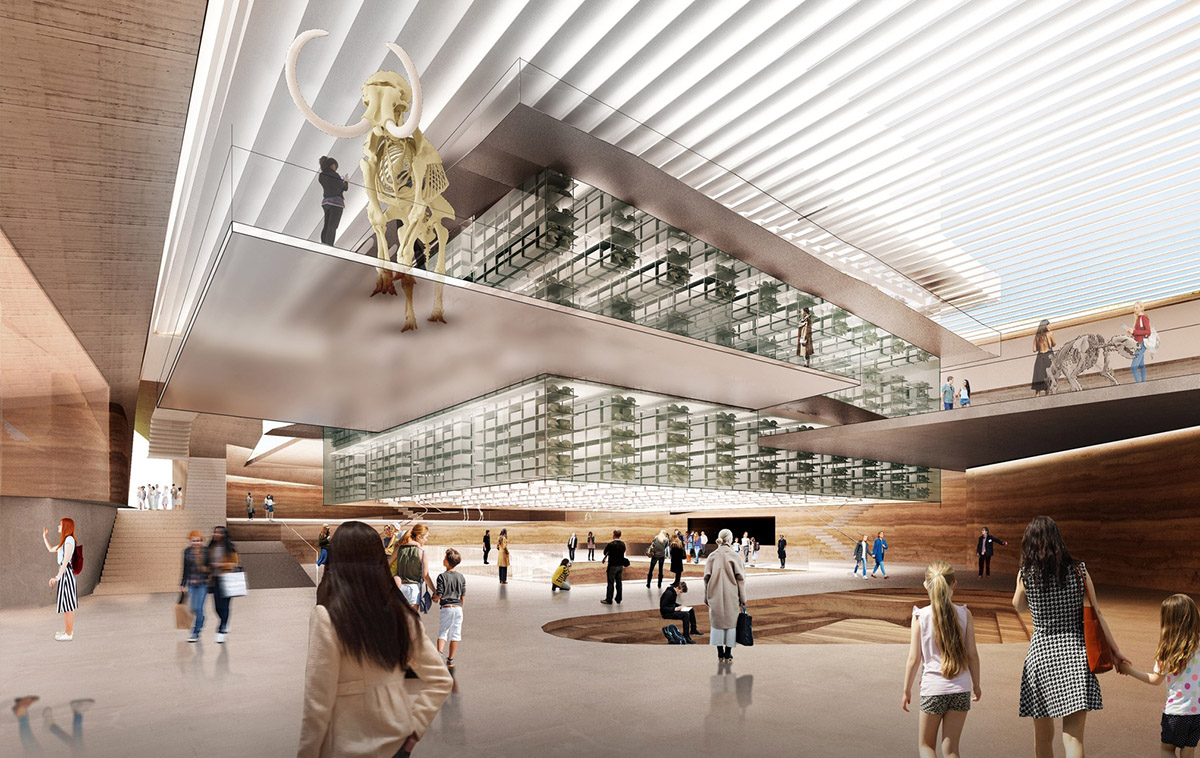
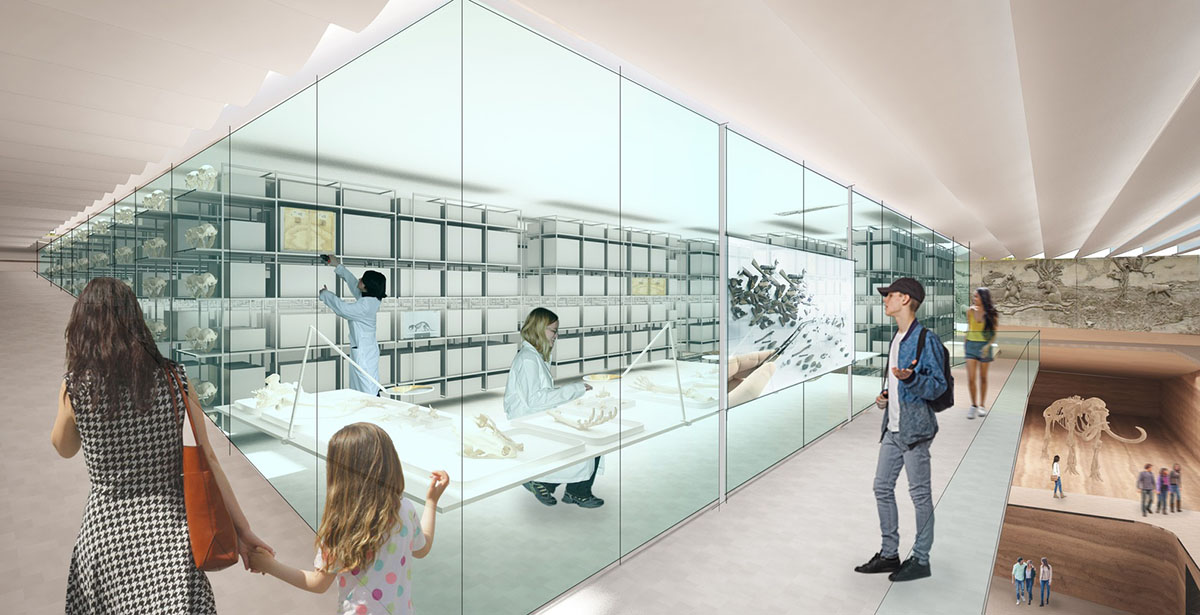
All images courtesy of DS+R
The only active paleontological research facility in the world that is located in a major urban area, La Brea Tar Pits is situated within the eastern portion of Hancock Park in Los Angeles’s Miracle Mile district. Since research began in 1913, the Tar Pits have yielded millions of samples, including saber- toothed cats, dire wolf and mastodon skeletons, innumerable plants, small rodents, and insects, and new discoveries are made daily in the Tar Pits open-air excavations.
These collections constitute an unparalleled resource for understanding environmental change in Los Angeles, and the planet, during the last 50,000 years of Earth’s history.
"As an urbanized culture, we are rarely conscious of the geological forces that shape the ground we walk (and drive) on. A new masterplan for the La Brea Tar Pits and Page Museum offers a unique opportunity to not only heighten awareness of the natural history held underfoot, but also to engender a sense of responsibility towards the role humans play in shaping the environment they inherit," said Diller Scofidio + Renfro.
"A revitalized Hancock Park is conceived to be the connective tissue between existing and new institutions, public spaces, and urban infrastructure. We have taken a ‘light touch’ approach for the next evolution of the Page Museum, infilling underutilized spaces and reconfiguring what is already there to create a more dynamic and efficient hybrid structure that is both building and landscape."
Dorte Mandrup
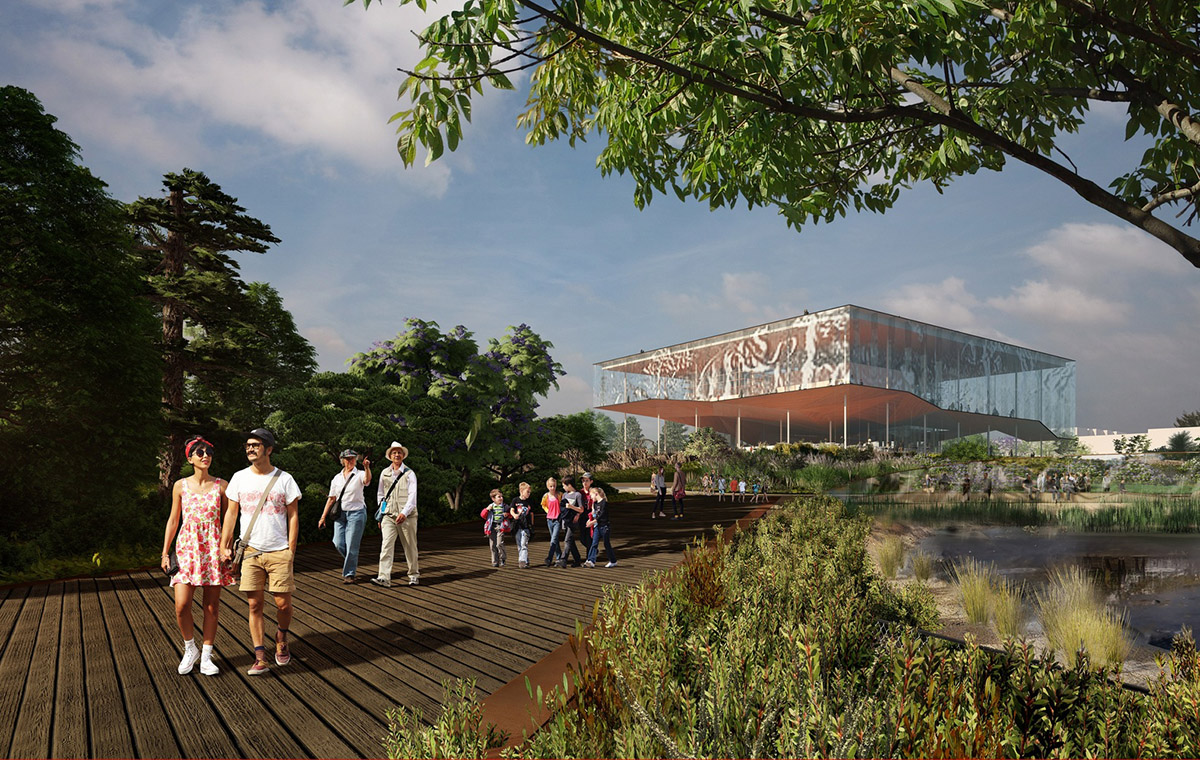
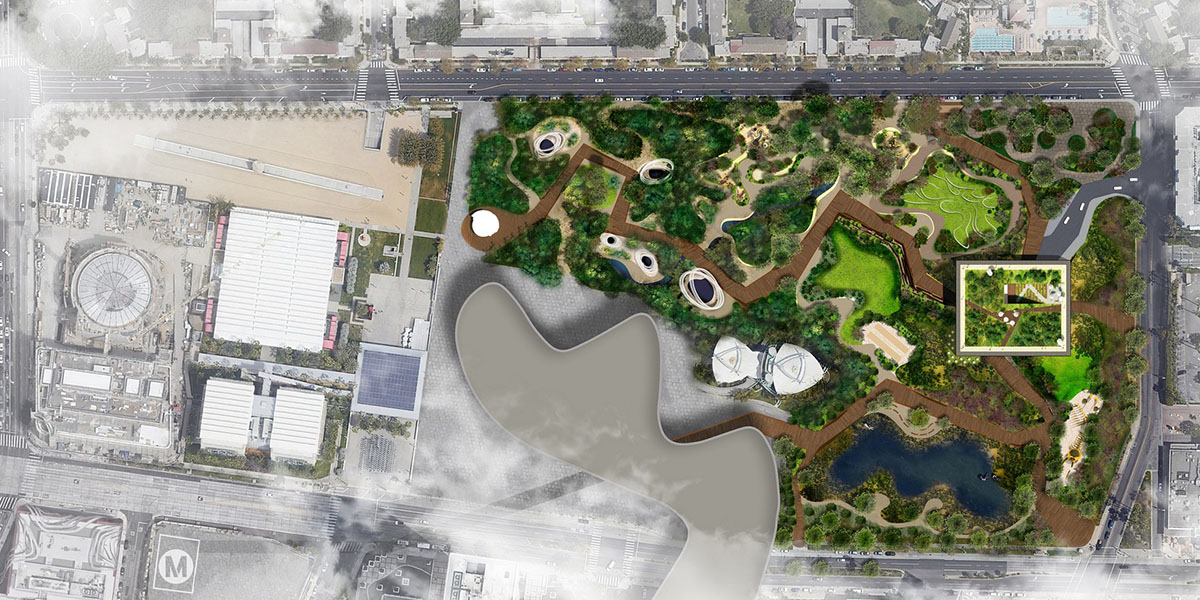
![]()
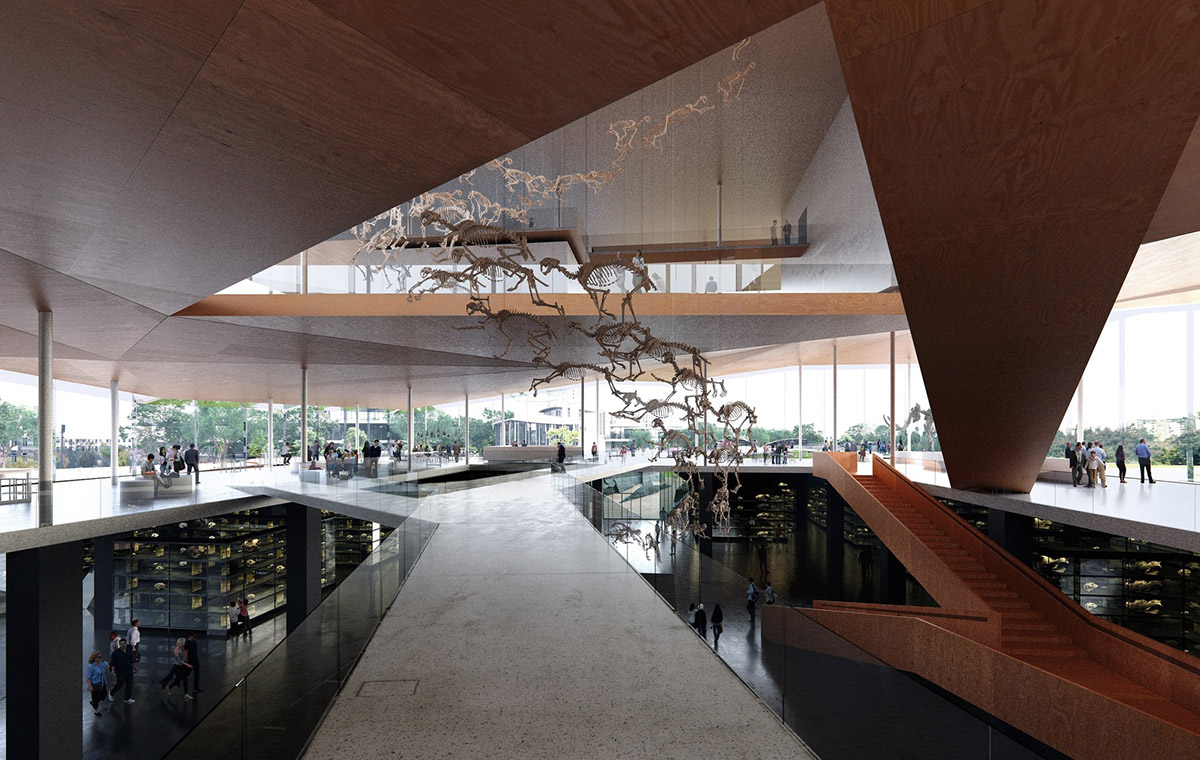
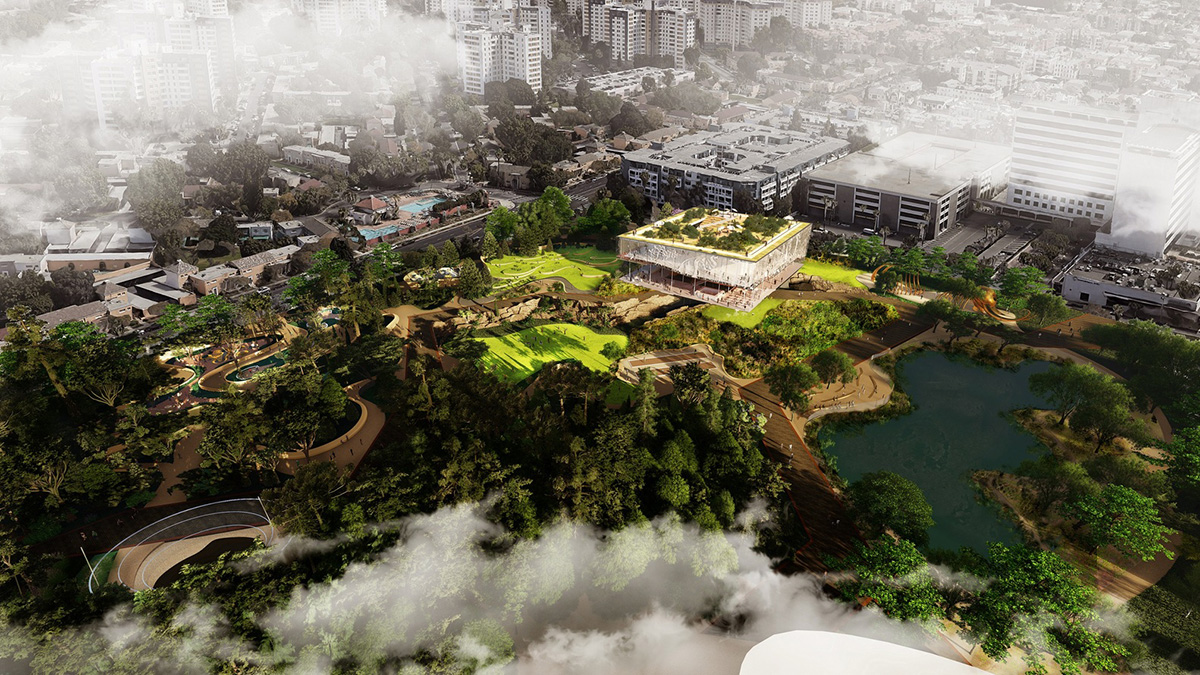
All images courtesy of Dorte Mandrup
To unfold the story hidden in the tar pits, Dorte Mandrup interweaves, extends and opens the park and museum,carrying the Page Museum into the future and significantly increasing the valuable green space of Hancock Park.
The existing building is opened up to thepark with slits in the landscape that gives light in and views outwards. Above, a Pleistocene mural appears in solar pixels. A visit here should be a journey of curiosity where your senses and imagination are awakened, from the moment you step into the park.
"For the residents of Los Angeles, Hancock Park and the Page Museum are nostalgic places that bring back memories,” said Dorte Mandrup-Poulsen, Founder and Creative Director of the studio Dorte Mandrup.
"We will cherish and build on this, as we open up and extend the park and museum to become one big living laboratory. Our proposal interweaves the park and museum, so the moment you step inside the park you become immersed into the story of the Tar Pits. A visit here should be a journey of curiosity, where senses and imagination are instantly awakened. Our hope is that this will bring visitors much closer to the world of natural science, and in turn heighten their understanding of the past, present and future of our planet."
WEISS/MANFREDI
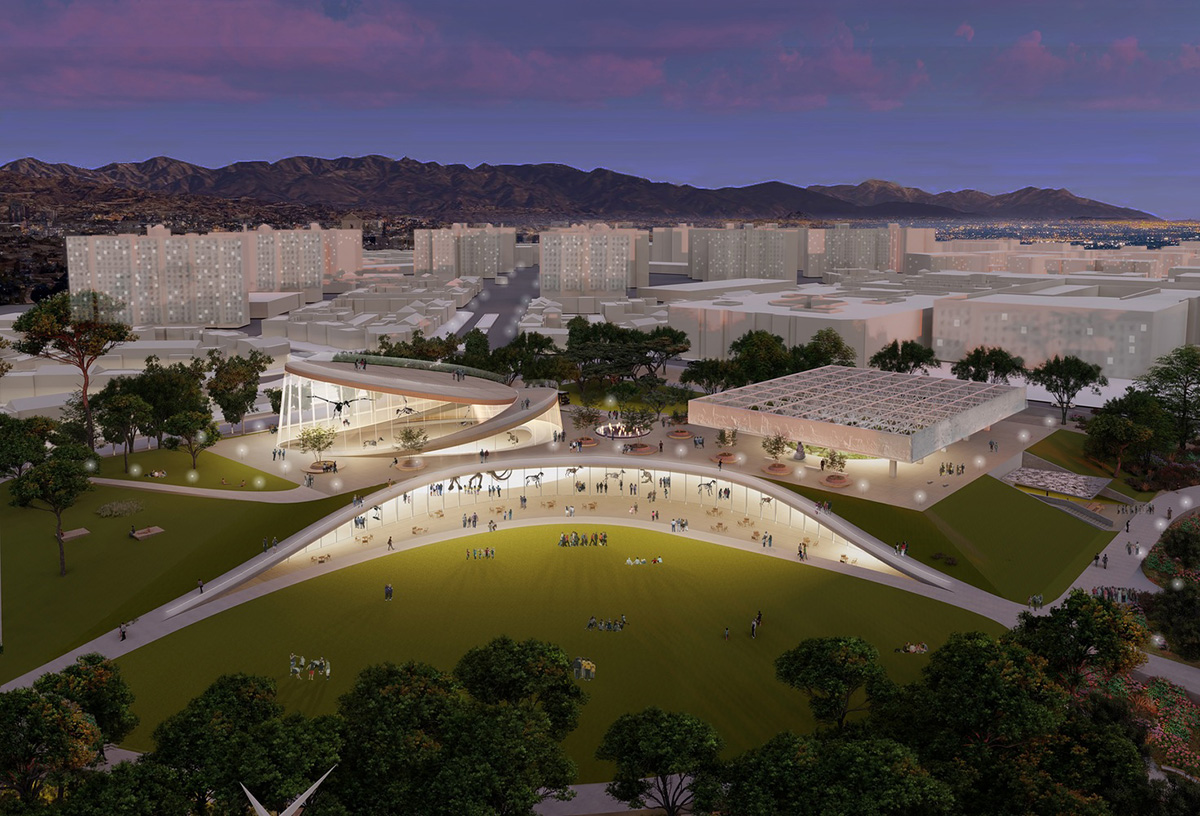
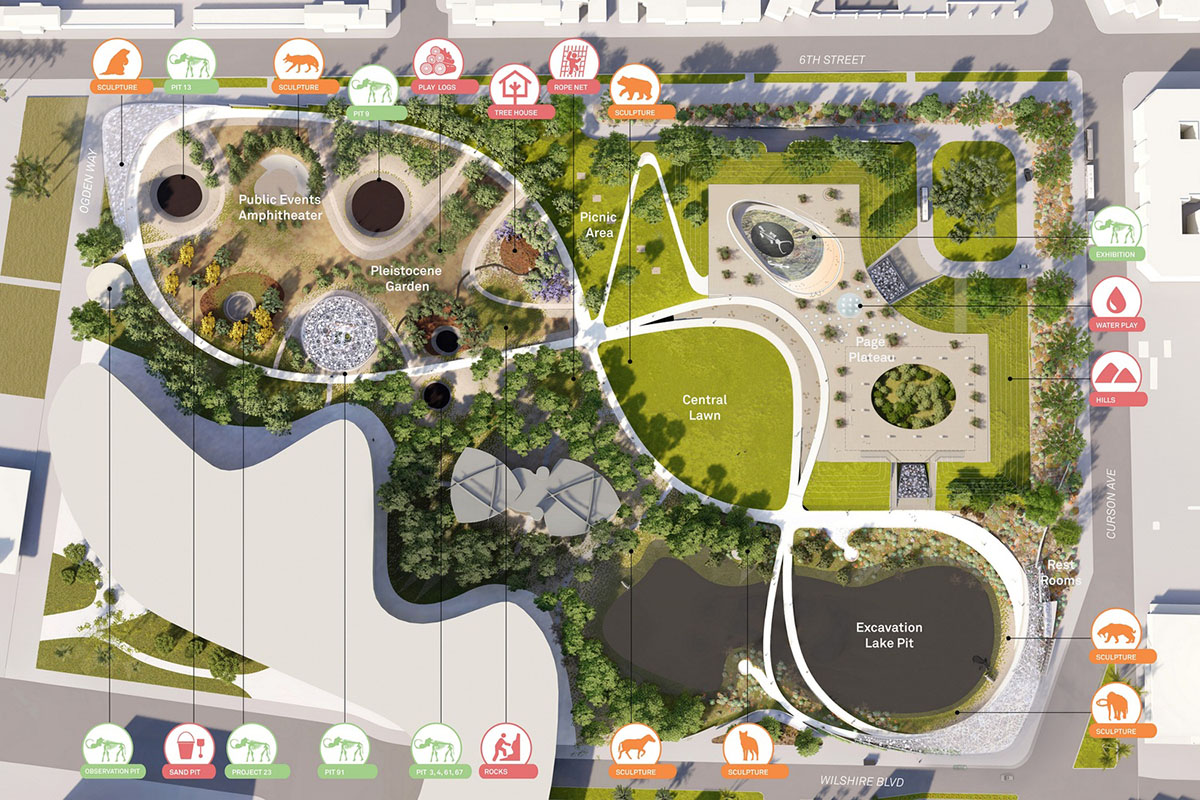
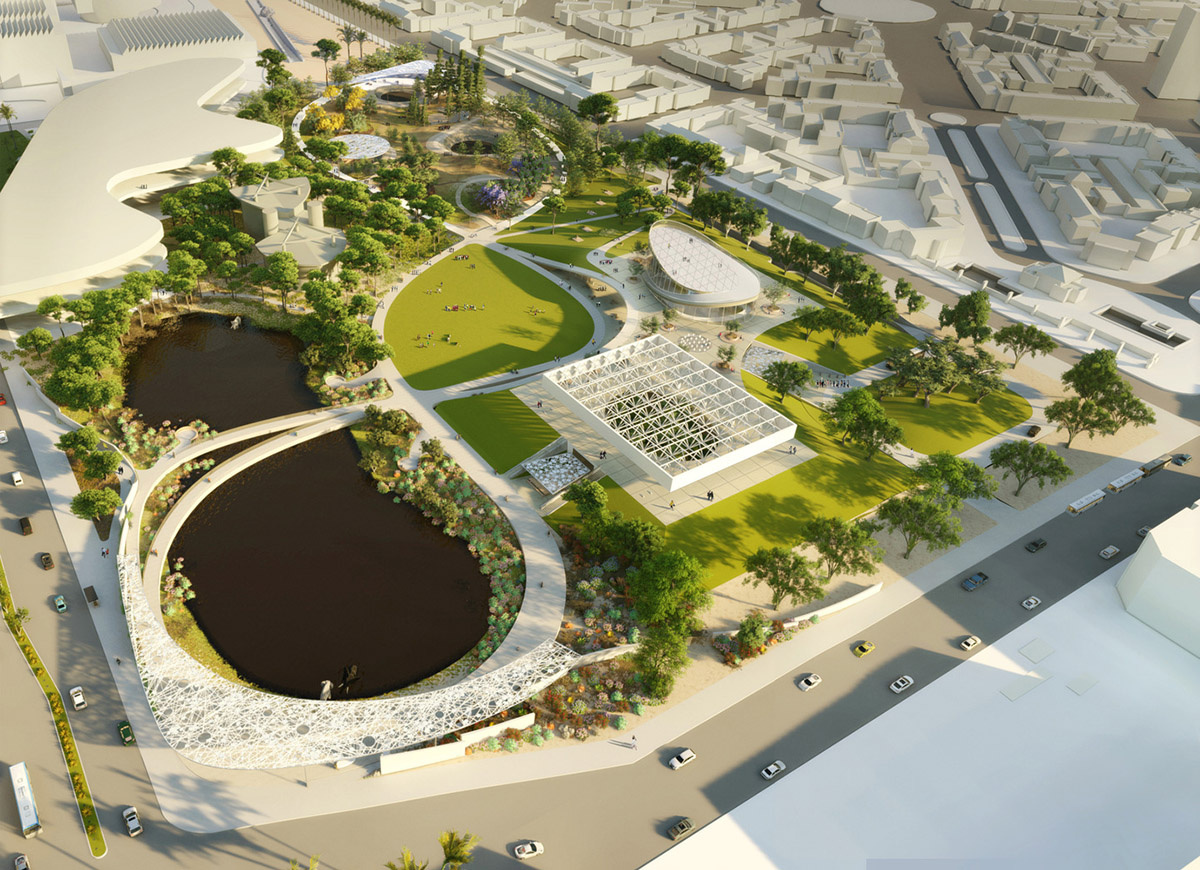
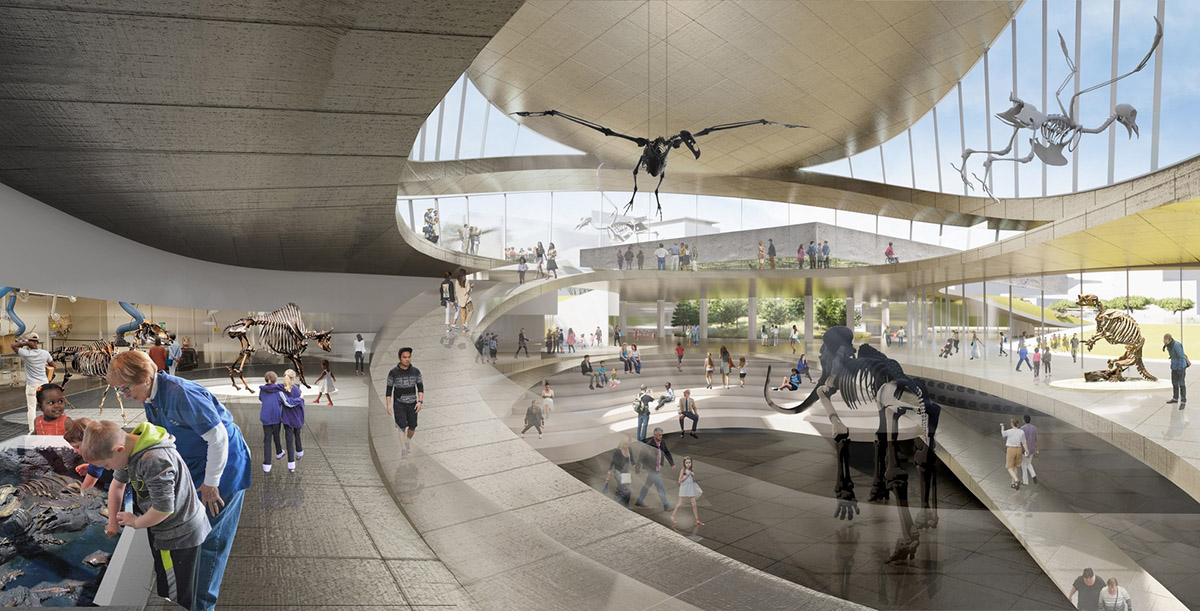
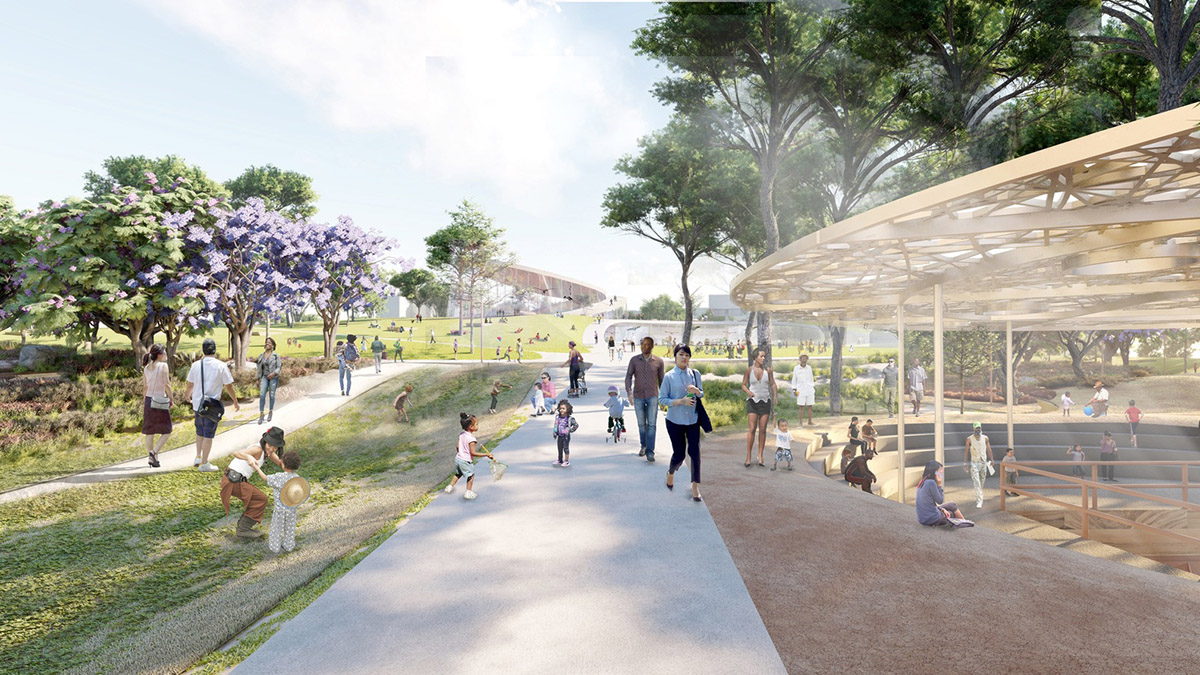
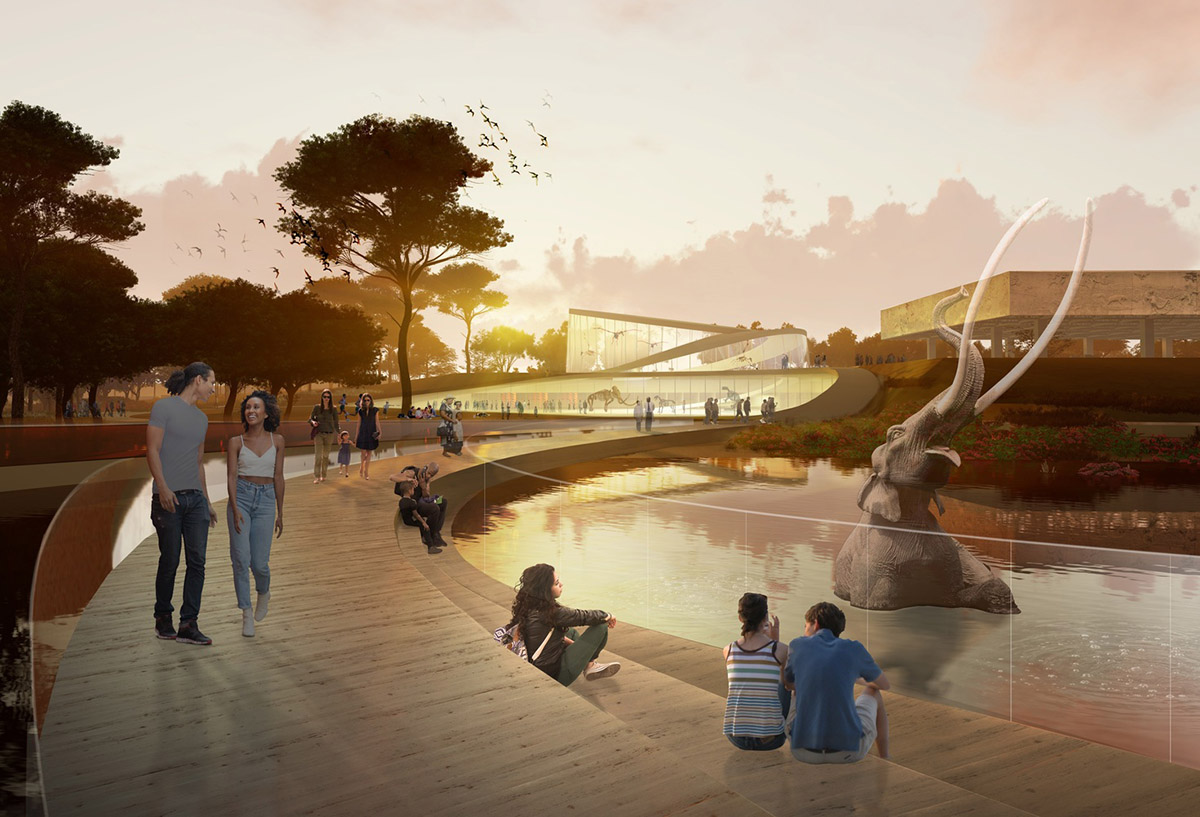
All images courtesy of WEISS/MANFREDI
WEISS/MANFREDI's proposed reimagination of the park and museum emerges from a close analysis of what is present, inspiring a commitment to preserve and magnify the park, tar pits, and museum as an ever-changing site of discovery.
The La Brea Loops and Lenses form a triple mobius that links all existing elements of the park to redefine Hancock Park as a continuously unfolding experience, connecting three distinguishing identities that are latent within the park today: Research and Revelation – the site of the excavation pits and Pleistocene Garden, Community and Culture – where the museum and central green are located, and Spectacle and Urban Fictions – where the lake pit and mastodons join the public imagination on Wilshire Boulevard. The different identities of the loops embody journeys, with programming that appeals to diverse interests—from paleontology to bird watching, from science to play.
The three teams' proposals will be displayed for public view in the museum at La Brea Tar Pits until September 15 - the exhibition includes models, renderings and drawings. The public is encouraged to make a feedback or review onsite or online.
Top image: WEISS/MANFREDI's proposal, image courtesy of WEISS/MANFREDI.
> via NHMLAC
